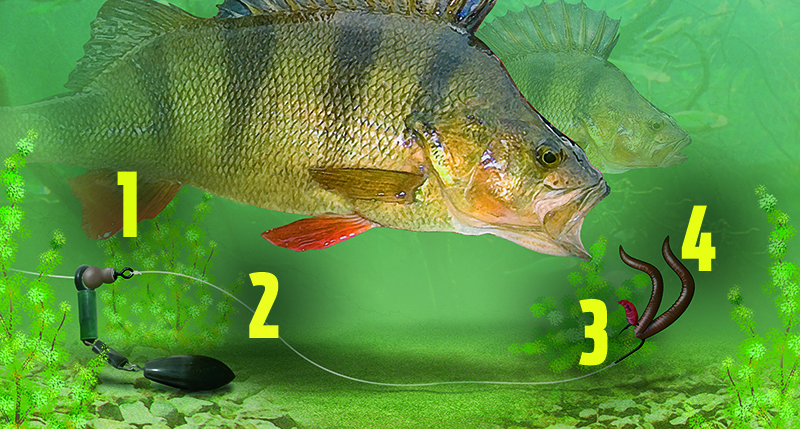How to tie | The bomb and worm rig
Worms – no perch angler would fish without them, and while the species will take a bait that’s drifting past them, when fishing to cover a static bait gets much better results.
Perch will tuck themselves under trees or close to snags, waiting for prey fish to go past, so popping a big lobworm right in front of them is an invitation too good to refuse.
A whole lobworm is a good, active bait, but two tail sections can be even better, as the broken worms give off attractive natural juices that spread through the water. Fish them on a size 8 hook with a simple running set-up using an Arlesey bomb – one of Dick Walker’s own inventions for tackling the lake of the same name – and a long tail of modern fluorocarbon line.
Feeding in this sitation is hard, but if you want to add some pices of chopped worm, make a few casts with a blockend feeder instead of the bomb.
1) free-running set-up
This streamlined lead is fished on a running rig comprising the bomb on a link swivel to a run ring. It’s topped by a tulip bead pushed into the swivel carrying the hooklink.
2) Arlesey bomb
This streamlined lead was developed specifically for perch fishing by Dick Walker for distance casting on deep lakes, but is now the go-to lead for many other scenarios.
3) Red maggot teaser
Two lobworm tails on a size 8 wide gape hook are the perfect medicine for specimen perch, but why not tip the bait off with a single red maggot for that extra bit of movement?
4) big bait for big perch
Perch do not chomp down on prey like pike, but ‘inhale’ it – and there’s not much their capacious mouths can’t take in. Two big lobworm tails will deter the smaller stripeys.

